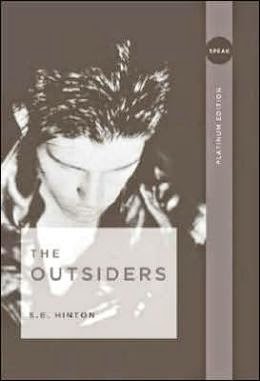Do you ever look through your home library and wonder:
Why haven’t I read this book yet? I’d know I’d love it, so why haven’t I made
time for it? I ask myself these questions way too often. I have hundreds
of books, and I need to read more of what’s on my shelf! So here's the challenge: take a look at my list below and tell me what I should read next! I own two of these books in hard copy, and have the rest in e-book form, but I want to know what YOU recommend, whether based on the descriptions (courtesy of bn.com) or your own reading experience.
The
Naturals—Jennifer Lynn Barnes
Seventeen-year-old Cassie is a natural at reading people.
She can tell you who you are and what you want, but it's not a skill that she's
ever taken seriously. That is, until the FBI come knocking: they've begun a classified
program that uses exceptional teenagers to crack infamous cold cases, and they
need Cassie. She’s sent to live with a group of teens whose gifts are as
unusual as her own. When a killer strikes, danger looms close. Caught in a
lethal game of cat and mouse, the Naturals are going to have to use all of
their gifts just to survive.
The
Girl of Fire and Thorns—Rae Carson
Once a century, one person is chosen for
greatness. Elisa is the chosen one. But she is also the younger of two
princesses, and hasn’t done anything remarkable. Now, on her sixteenth
birthday, she has become the secret wife of a handsome and worldly king—a king
whose country is in turmoil. He needs her to be the chosen one, not a failure
of a princess. Yet he's not the only one who seeks her. Savage enemies,
seething with dark magic, are hunting her. A daring, determined revolutionary
thinks she could be his people's savior. Soon it is not just her life, but her
very heart that is at stake.
The
Outsiders—S.E. Hinton
Three brothers struggle to stay together
after their parents' death, as they search for an identity among the
conflicting values of their adolescent society in which they find themselves
"outsiders." The ruthlessly realistic and violent story of the
Greasers and the Socs, rival gangs from very different sides of the railroad
tracks, is narrated by Ponyboy Curtis, a smart, sensitive kid forced to be
tough on the outside, but who underneath is just as scared and needy as anyone.
Finnikin
at the Rock—Melina Marchetta
Finnikin was only a child during the five days of the
unspeakable, when the royal family of Lumatere were brutally murdered, and an
imposter seized the throne. Now a curse binds all who remain inside Lumatere’s
walls, and those who escaped roam the surrounding lands as exiles. Now Finnikin’s
on the cusp of manhood and joins forces with an enigmatic young novice named
Evanjalin, who claims that her dark dreams will lead the exiles to a surviving
royal child and a way to pierce the cursed barrier and regain the land of
Lumatere.
The
Archived—Victoria Schwab
Each body has a story to tell, a life seen in
pictures that only Librarians can read. The dead are called Histories, and the
vast realm in which they rest is the Archive. Da first brought Mackenzie Bishop
here four years ago, but now Da is dead, and Mac has grown into what he once
was: a ruthless Keeper, tasked with stopping often-violent Histories from
waking up and getting out. And yet, someone is deliberately altering Histories,
erasing essential chapters. Unless Mac can piece together what remains, the
Archive itself might crumble and fall.
The
Raven Boys—Maggie Stiefvater
Every year, Blue Sargent stands next to her
clairvoyant mother as the soon-to-be dead walk past. This year, a boy emerges
from the dark and speaks to her. His name is Gansey, a rich student at
Aglionby, the local private school. Blue has a policy of staying away from
Aglionby boys. Known as Raven Boys, they can only mean trouble. He's on a quest that has
encompassed three other Raven Boys: Adam, Ronan and Noah. Blue has always been
warned that she will cause her true love to die. She doesn't believe in true
love, and never thought this would be a problem until her life becomes caught
up in the strange and sinister world of the Raven Boys.
Uglies—Scott
Westerfeld
In Tally's world, your sixteenth
birthday brings an operation that turns you from a repellent ugly into a
stunningly attractive pretty and catapults you into a high-tech paradise where
your only job is to have a great time. In just a few weeks Tally will be there.
But Tally's new friend Shay isn't sure she wants to be pretty. When Shay runs
away, the authorities offer Tally the worst choice she can imagine: find her
friend and turn her in, or never turn pretty at all. The choice Tally makes
changes her world forever.
Which one of these books should jump to
the top of my TBR pile? Let me know in the comments!























